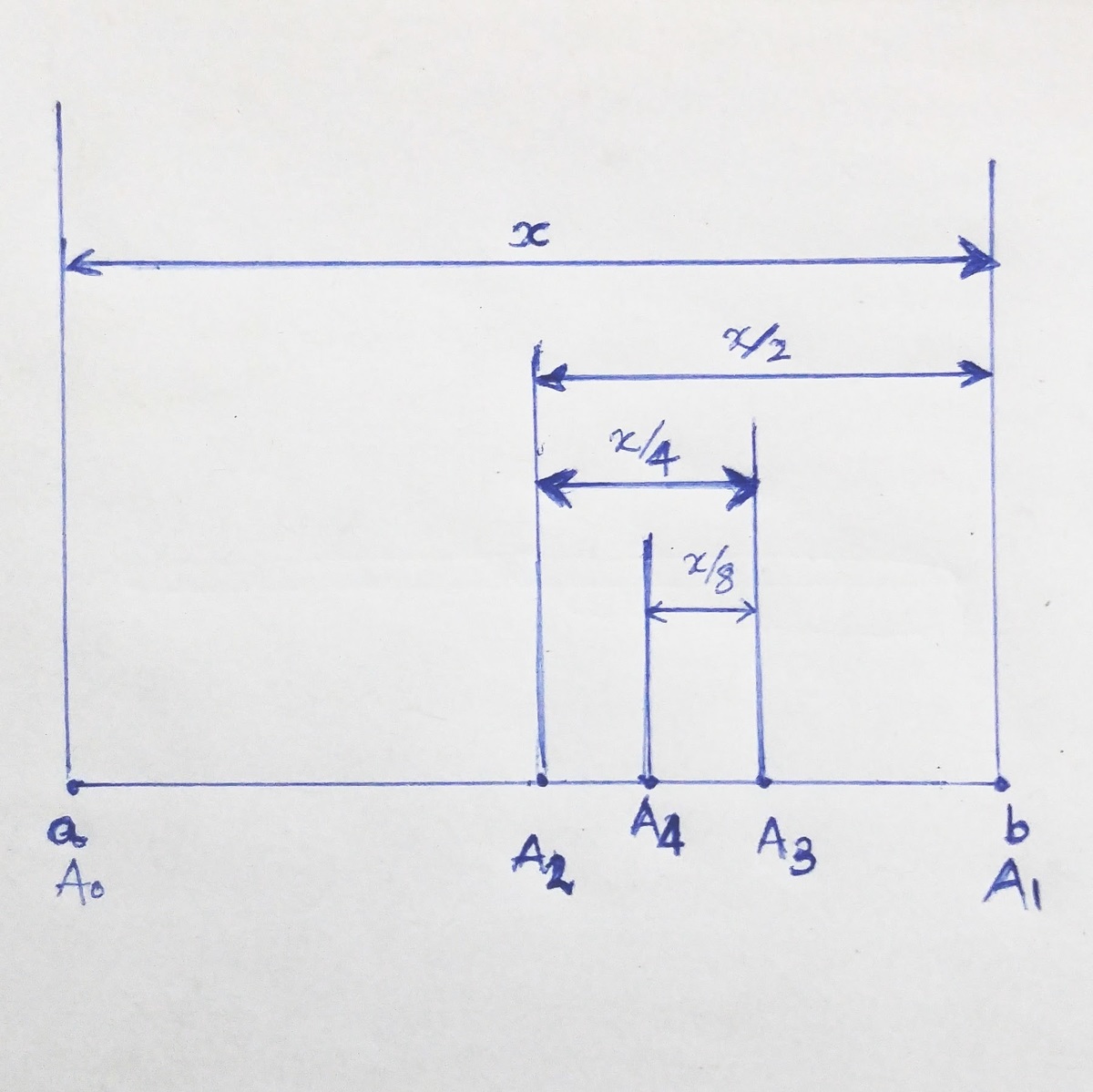Average limit
Let A 0 = a , A 1 = b for some constants a , b , and also A n = 2 A n − 1 + A n − 2 .
If the value of n → ∞ lim A n can be expressed as X a b + Y a + Z b + W , where X , Y , Z , W are all constants, submit your answer as Y Z + X − W .
The answer is 0.2222222222.
This section requires Javascript.
You are seeing this because something didn't load right. We suggest you, (a) try
refreshing the page, (b) enabling javascript if it is disabled on your browser and,
finally, (c)
loading the
non-javascript version of this page
. We're sorry about the hassle.
3 solutions

If we plot a and b along a number line as shown in the figure above
A 1 A 2 A 3 A n n → ∞ lim A n Thus, = a + x = a + ( x − 2 x ) = a + ( x − 2 x + 4 x ) = a + x ( k = 0 ∑ n − 1 ( 2 − 1 ) k ) = a + x ( k = 0 ∑ ∞ ( 2 − 1 ) k ) = a + x ⎝ ⎜ ⎛ 1 + 2 1 1 ⎠ ⎟ ⎞ = a + x ( 3 2 ) = a + 3 2 ( b − a ) = 3 a + 3 2 b W = 0 , X = 0 , Y = 3 1 , Z = 3 2 Y Z + X − W = 9 2 "x" is the distance between a and b,i.e, x = b − a
Calculating A − 1 and A − 2 , to use the Z-transform :
2 A 1 = A 0 + A − 1
2 b = a + A − 1
A − 1 = 2 b − a
2 A 0 = A − 1 + A − 2
2 a = 2 b − a + A − 2
A − 2 = 3 a − 2 b
So, applying the Z-transform in the equation:
2 A ( z ) = z − 1 A ( z ) + A − 1 + z − 2 A ( z ) + z − 1 A − 1 + A − 2
A ( z ) = 2 − z − 1 − z − 2 2 a + ( 2 b − a ) z − 1
A ( z ) = 1 − 0 . 5 z − 1 − 0 . 5 z − 2 a + ( b − 0 . 5 a ) z − 1
By partial fractions:
A ( z ) = 3 1 [ 1 + 0 . 5 z − 1 2 a − 2 b + 1 − z − 1 a + 2 b ]
Applying inverse Z-transform:
A n = 3 1 [ ( 2 a − 2 b ) ⋅ ( − 0 . 5 ) n + ( a + 2 b ) ]
When n → ∞ :
n → ∞ lim A n = 3 1 ( a + 2 b )
So:
X = 0 , Y = 3 1 , Z = 3 2 , W = 0 , making the answer 9 2
Relevant wiki: Linear Recurrence Relations - With Repeated Roots
Since A n = 2 A n − 1 + A n − 2 , ⟹ 2 A n = A n − 1 + A n − 2 . Therefore, the characteristic equation is as follows:
2 r 2 − r − 1 ( r − 1 ) ( 2 r + 1 ) ⟹ r ⟹ A n = 0 = 0 = { 1 − 2 1 = c 1 + c 2 ( − 2 1 ) n where c 1 , c 2 are constants.
{ A 0 = a A 1 = b ⟹ c 1 + c 2 = a ⟹ c 1 − 2 c 2 = b . . . ( 1 ) . . . ( 2 )
( 1 ) − ( 2 ) : 2 3 c 2 = ( a − b ) ⟹ c 2 = 3 2 ( a − b )
( 1 ) : c 1 = a − c 2 = a − 3 2 ( a − b ) = 3 1 ( a + 2 b )
⟹ A n n → ∞ lim A n = 3 1 a + 3 2 b + 3 2 ( − 2 1 ) n ( a − b ) = n → ∞ lim 3 1 a + 3 2 b + 3 2 ( − 2 1 ) n ( a − b ) = 3 1 a + 3 2 b
⟹ X = 0 , Y = 3 1 , Z = 3 2 , W = 0 and Y Z + X − W = 3 1 ⋅ 3 2 + 0 − 0 = 9 2 ≈ 0 . 2 2 2